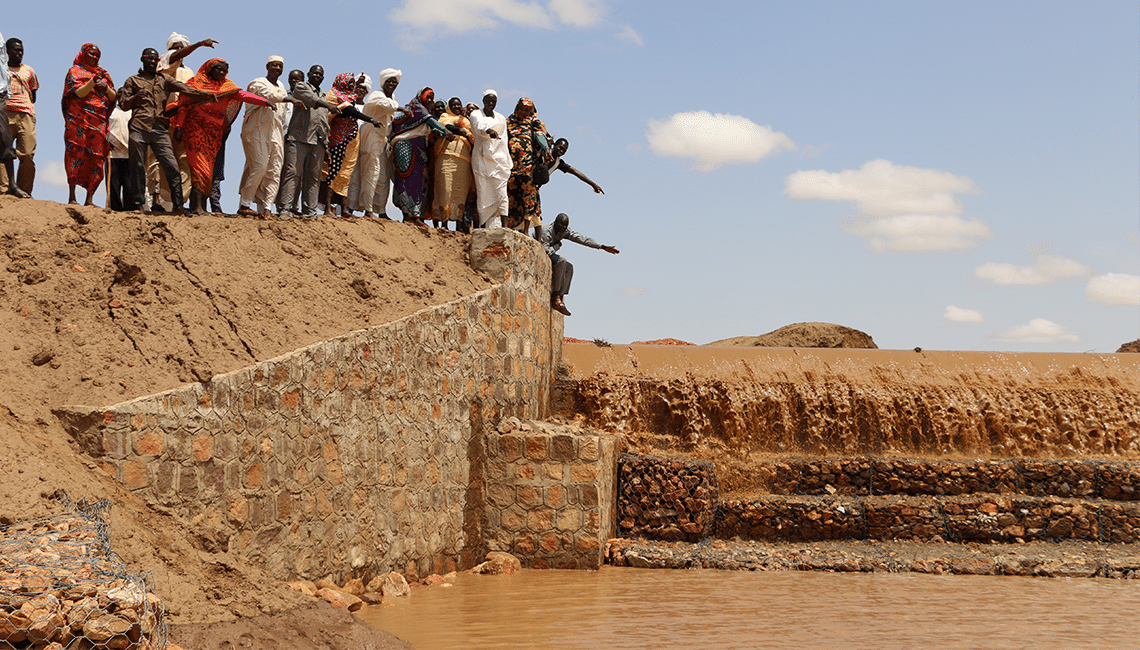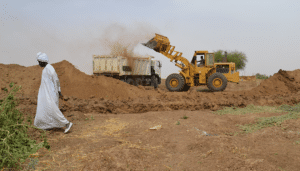
A new dam bringing relief to the community
In addition to long periods of drought, the great plains of Darfur experience a mighty rainy season in which huge amounts of water can fall quickly, creating wide areas where water runs off.
For most of the year, the region is pockmarked with dry river beds, which have been fed by these vast areas where heavy rains run off. But for a few months, these rivers and the flood plains are filled with precious water.
For years, locals had built small dams in which water would gather, flood and, in turn, make their farmland fertile
However, civil war and the movement of people has increased the demand for this water, meaning more land and bigger dams were needed. Neglect during the conflict meant some fell into disrepair and huge swathes of land which had previously yielded food staples such as sorghum and millet fell into disuse.
When the Practical Action teams first established links with village committees a long process of information gathering, negotiation and understanding began. They worked with communities to identify the best locations for dams in order to irrigate the largest amount of potentially fertile land.
Local knowledge here is essential, in addition to careful mapping and understanding of local topography. The dams are not high and they sit upon the smallest dips in the land. To an untrained eye, it is completely unidentifiable as a place where water would run off.
Once the location is identified, the hardware is brought in. Initially diggers move piles of earth to create the basis for the dams, which can measure up to 2 km long.

Building a dam
Then, as with all Practical Action projects, those who are set to benefit are expected to contribute – in this case, with their own labour.
In each location, hundreds of villagers join in the efforts – carrying and moving rocks and stones and placing them in large wire containers, to create the hardcore, heavyweight base which will provide the stability for the dam and the necessary engineering to allow the water to flow through, when necessary.
This is a tough, laborious process which takes place under the hot sun and before, or after a hard day’s work in the fields. But it ensures the community the dam serves not only takes ownership, but also understands the principles of the engineering process so they can identify damage, repair, or seek assistance, if necessary.
The work is overseen by local civil engineers, in addition to Practical Action staff, and although it might appear somewhat underwhelming when you walk up to it during the dry season, when the rains fall and tonnes of water starts flowing into newly rehabilitated farmland, the impact is incredible.
Once installed, the dams work to distribute the water equally over the upstream and downstream of the weir. It helps to reduce the water speed and flow so the water can infiltrate Darfur’s clay soil which increases the moisture retained so it can be used for crop production for three months after the rains finish.
This method is already being replicated elsewhere in Sudan. Not only by Practical Action, in their work in Kassala state in the east of Sudan, but by other INGOs and regional Governments elsewhere in the country, so many thousands more farmers can benefit.